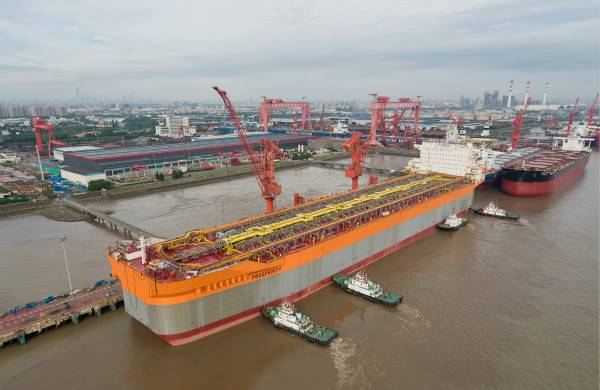News Americas, NEW YORK, NY, Tues. July 12, 2021: In one of his songs, Johnny Nash sang: “There are more questions than answers, and the more I find out, the less I know.” This is so apt to describe the Guyana Environmental Protection Agency, EPA’s online forum held recently, and the Guyana government’s proposed Gas-to-Shore project.
Nearly 80 people joined the forum and peppered the EPA with questions. However, all they got were canned, prepackaged, bureaucratic responses, where words were used but nothing was said to enlighten the participants whose enquiring minds wanted to know the finer details about the gas project.
There were many distinguished Guyanese in attendance, including many in the Diaspora, such as Professor Jannette Bulkan, Professor Maya Trotz, the Oil and Gas Governance Network’s head – Darshanand Khusial, Mike Persaud and yours truly as well as Dr. Marie Correia, Dr. Raquel Thomas, Dr. David Singh, Simone Mangal-Joly, Roweena, David Modeste, marine biologists and others.
It was heartening to know that so many Guyanese were concerned and cared about the impact of this proposed project. Only if they will all form a united front and raise their voices will our government pause and listen rather than sign another secret, “Dollar Store” deal with Exxon as the APNU/AFC did.
Below were some questions and comments at the Forum:
- Can the EPA make the application public, please?
- Can the gas to shore studies by the previous Government on location and feasibility be shared with the public?
- The Escazu agreement ratified by Guyana requires more openness and background documentation now.
- Please clarify how this project plans to avoid the take-and-pay problems in Ghana.
- Will flaring out at sea stop once the gas is being diverted to land?
- Why is it that in the case of a wellhead blowout, the companies have nothing in place to safeguard or protect this country?
- Why are we allowing “shell” companies to operate here when they have no assets and can declare bankruptcy and run in the event of a disaster? Change the law to prohibit “shell” companies.
- Images of a gas fire in Mexican waters should send shivers down our spines as it took 5 hours to put the fire out. In Guyana, sometimes our fire engines show up at fires with no water in their tanks. This gas fire in Mexico should cause us to be ever more vigilant about this gas to shore project. In a project with 220 kilometers of pipelines, the risk of disaster is great. Look at Exxon’s ongoing, long running problem with the gas compressor.
- Guyana is not now monitoring oil production onsite and has to give notice if it wants to visit the FPSO. How will there be better monitoring of this gas-to-shore project? What is Guyana’s/EPA’s capacity to monitor such a project that would have 220 kilometers of pipelines to monitor?
- The EPA was sued for giving Exxon a 20-year permit and the courts found that to be illegal. How can we trust the EPA with limited talent and inadequate staff to monitor another big project?
- Who are the technical experts at the EPA who will be evaluating the scope of the project?
- Exxon has not answered the questions raised whether they are carrying full insurance for oil spills, accidents, etc. Why the silence? EPA needs to get a full, complete description of the proposed insurance coverage.
- Why should the Guyanese people trust Exxon with a new Gas to shore project when it has a poor record on protecting the environment and has engaged in excessive flaring, and continues to ask for permission to flare yet more? How can we trust Exxon if it cannot solve a simple gas compressor problem? And the current oil deal seems to place the responsibility to pay for oil spills on the people of Guyana. Before approving the project, ask Exxon to release its current insurance coverage for oil.
- This project should be discussed by Parliament and involve the Opposition. The natural resources of Guyana belong to the people. They are not the property of politicians and parties. One Government blames the other for a bad contract. This new Government must approach this project with full openness and transparency. Discuss the project in Parliament before approval.
- Is the EPA now monitoring the flow rates and the contents of the discharged process water from the FPSO?
- There may be significant socioeconomic impact on the fisherfolks. There are already reports that fish stock has decreased. What systems are in place to compensate these fisherfolks?
- Two of the pollutants mentioned in the presentation are mercury and hydrogen sulphide. Have the other emissions (liquid, solid, vapor) expected as a byproduct of the gas refining and associated processes been identified) and how would these be addressed with respect to mitigation, and impact to the proximity of these plants?
The inadequacy of the Guyana Environmental Protection Agency was on full display as the apparent young, inexperienced staff could not provide answers to most questions, or dodged questions altogether. The Exxon presenter who was there was shielded from questions that Exxon should answer.
We should not sit idly by and let successive governments screw the nation with bad deals.
EDITOR’S NOTE: Dr. Jerry Jailall is an Education Consultant at the North Carolina State Department of Public Instruction (NCDPI), North Carolina, USA. He has served in education for 25+ years at the elementary-, middle-, high-, and university levels in Guyana, the Bahamas, the USA and the United Arab Emirates. Dr. Jailall holds five degrees and several certifications in education, has written chapters in books and journal articles, and is Co-author of a Corwin Press bestseller, The Principal as Curriculum Leader: Shaping What is Taught and Tested.










